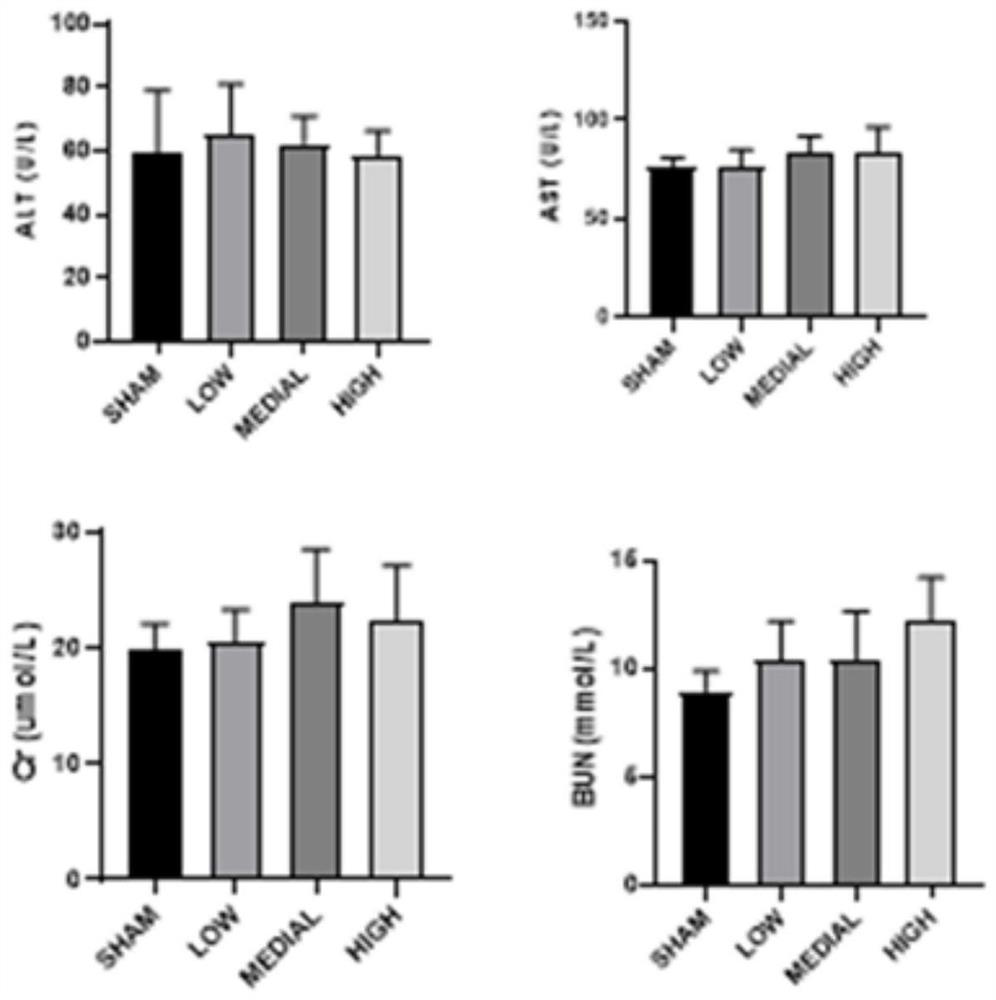Nano-drug for preventing or treating cerebral ischemia-reperfusion injury as well as preparation method and application of nano-drug
A technology of cerebral ischemia reperfusion and preparation process, which is applied in the field of drug preparation to achieve the effects of inhibiting inflammation, inhibiting brain inflammation, and inhibiting excessive activation
- Summary
- Abstract
- Description
- Claims
- Application Information
AI Technical Summary
Problems solved by technology
Method used
Image
Examples
Embodiment 1
[0034] Embodiment 1: Preparation materials and methods of polydopamine nanoparticles
[0035] 1. Main reagents and consumables
[0036]
[0037] 2. Main experimental equipment
[0038]
[0039] 3. Preparation of polydopamine nanoparticles
[0040] (1) Configure weak alkaline reaction buffer solution
[0041] In an open round-bottomed flask, first mix 8 mL of absolute ethanol and 18 mL of deionized water evenly, then add 150 μL of ammonia water, and stir with a magnetic stirrer at room temperature for 30 min to prepare the ammonia water-ethanol mixed solution. The final volume of the mixed solution is About 25mL.
[0042] (2) Dopamine self-polymerization reaction
[0043] Weigh 100 mg of dopamine hydrochloride powder and add 25 mL of ammonia water-ethanol mixed solution reaction buffer prepared in advance, and keep stirring at room temperature for 30 hours. It can be found that the color of the solution gradually changes from colorless to brown, and then gradually tur...
Embodiment 2
[0049] Example 2: Effects of Polydopamine Nanoparticles on Liver and Kidney Tissue Functions
[0050] 1. Experimental animals
[0051] 24 male SD rats. The rats were placed in a standard feeding environment, the ambient temperature was controlled at (22-24° C.), the humidity was 60%, the light time and the dark time were controlled alternately every 12 hours, and the rats had free access to standard food and clean drinking water.
[0052] 2. Experimental method:
[0053] The experimental animals were divided into cages at random, and the administration was started after 3 days of adaptive feeding. For the method, see the group and the administration plan.
[0054] 3. Group and dosing regimen:
[0055] 24 rats were randomly divided into 4 groups according to different doses of PDA: low dose group (5mg / kg), middle dose group (10mg / kg), high dose group (20mg / kg), blank control group (equal volume physiological brine). After only one intraperitoneal drug injection, the rats w...
Embodiment 3
[0058] Example 3: Observation of the cytotoxic effect of polydopamine nanoparticles on rats
[0059] 1. Experimental cells:
[0060] Rat adrenal pheochromocytoma cell PC12, rat renal endometrial cell HBZY-1, rat normal liver cell BRL-3A, and the above cell lines were provided by Jiangsu KGI Biotechnology Co., Ltd.
[0061] 2. Experimental method:
[0062] Digest and count the cells, prepare cell suspension (PC12 5.0×104 cells / mL, HBZY-1, BRL-3A 3.5×104 cells / mL), add 100 μL cell suspension to each well of a 96-well cell culture plate;
[0063] Place the 96-well cell culture plate at 37°C, 5% CO 2 Cultivate in the incubator for 24 hours;
[0064] Dilute the drug with the medium to the required concentration of the working solution, add 100 μL of the corresponding drug-containing medium to each well at 0, 24, 48, and 60 hours respectively, and make 3 duplicate wells, and set up a negative control group at the same time;
[0065] Place the 96-well cell culture plate at 37 °C,...
PUM
| Property | Measurement | Unit |
|---|---|---|
| Average size | aaaaa | aaaaa |
Abstract
Description
Claims
Application Information
 Login to View More
Login to View More - R&D
- Intellectual Property
- Life Sciences
- Materials
- Tech Scout
- Unparalleled Data Quality
- Higher Quality Content
- 60% Fewer Hallucinations
Browse by: Latest US Patents, China's latest patents, Technical Efficacy Thesaurus, Application Domain, Technology Topic, Popular Technical Reports.
© 2025 PatSnap. All rights reserved.Legal|Privacy policy|Modern Slavery Act Transparency Statement|Sitemap|About US| Contact US: help@patsnap.com



